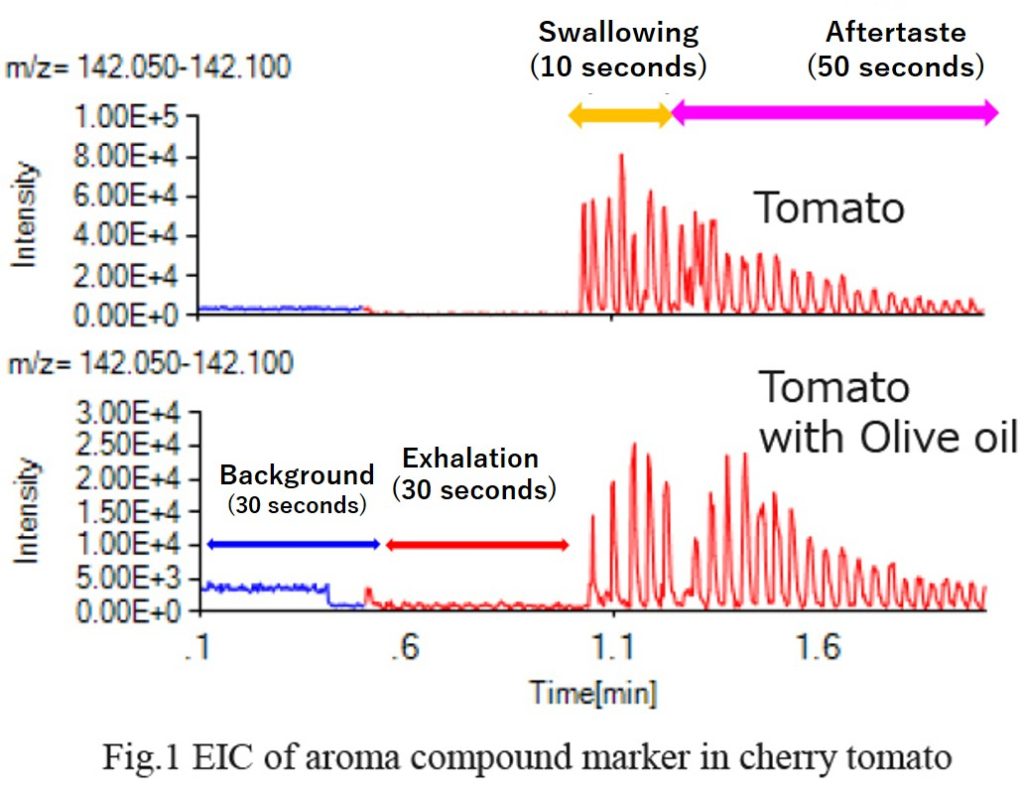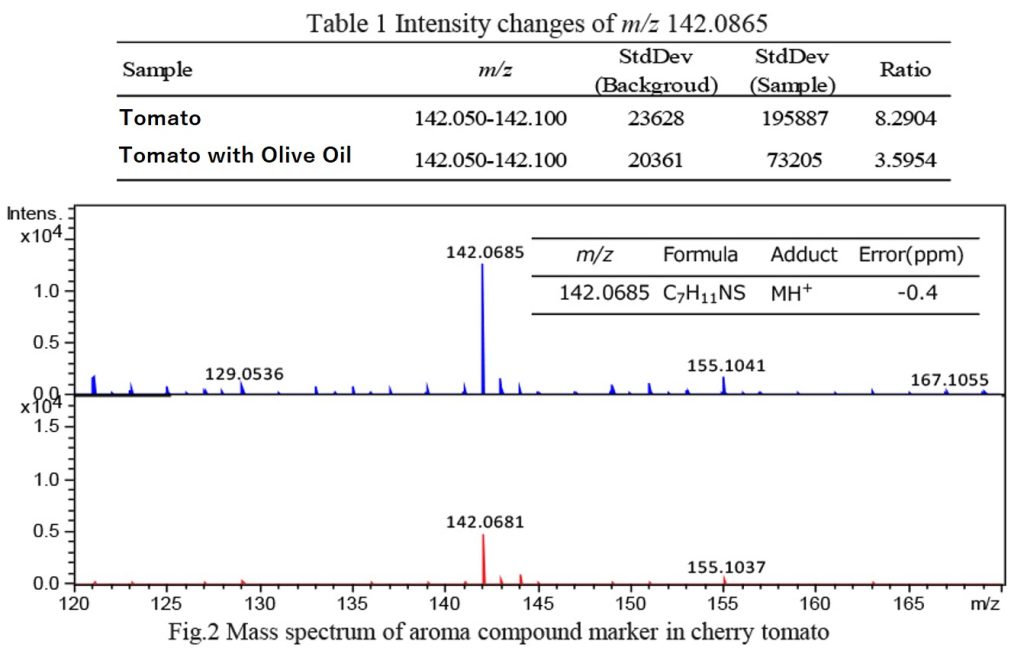Masking Effect of Olive Oil on Tomato Retronasal Aroma
Purpose
The masking effect of olive oil on the aroma of cherry tomatoes was investigated using a time-of-flight mass spectrometer as the detector.
Methods
| Ion Source | ChemZo (BioChromato) |
| Mass Spectrometer | compact QTOF (Bruker) |
| Measurement Method | The aromatic components in the exhaled breath were introduced into the mass spectrometer through a tube after swallowing cherry tomatoes and cherry tomatoes with olive oil. |
| Data Processing | Spectra Scope and Data Analysis software were used to extract aromatic components from the mass spectra and to process the masking effect of olive oil. |
Results
Fig. 1 shows the EIC of representative aromatic components of cherry tomatoes and cherry tomatoes with olive oil. It was observed that the EIC intensity gradually decreased after swallowing and those with olive oil reduced the EIC intensity to about one-third. Table 1 summarizes the intensity changes of the aromatic component m/z 142.0865. Higher Ratio values indicate greater changes compared to the background.

Fig. 2 shows the mass spectra during swallowing and aftertaste. The chemical formula calculated from m/z 142.0865 was identified as C7H11NS, which is estimated to be 2-isobutylthiazole, a trace aromatic component of tomatoes. It is suggested that olive oil reduced the aroma of 2-isobutylthiazole, a characteristic tomato aroma, through its masking effect.

ChemZo Product Page / Applications
